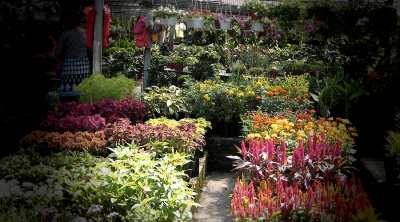
QALAAT JAABAR, Syria: An ancient lake-side fortress once used by jihadists to launch attacks is slowly regaining its status as a key cultural destination, attracting visitors from across war-torn Syria.
Families posed for pictures under the hot June sun, some perched on an ancient brick wall overlooking the banks of Lake Assad, a man-made reservoir in northern Syria’s Raqa province.
Abdullah al-Jaber was visiting Qalaat Jaabar with his children for the first time even though they live less than an hour away by car.
He said he would often show them photographs of his childhood trips to the citadel in the hope that they would one day visit it together.

“Their dream was to see Qalaat Jaabar,” the 41-year-old said with a smile.
“Today I brought them here to see it.”
The Islamic-era landmark has attracted a growing number of visitors since the start of summer as security has improved in recent years.
The historic fortified site dates back to the Seljuk and Mamluk periods and is considered one of Syria’s most preeminent fortresses.
The castle became an island when Lake Assad was formed in 1974 by the completion of the Tabqa dam on the Euphrates River.
Qalaat Jaabar is connected to the mainland by a thin causeway. It has 35 bridges and a mosque and it used to shelter a museum with dozens of artifacts, but that was ransacked by the Islamic State group.

Boat rides and picnics
The site lies around 50 kilometers from Raqa city, once the de facto Syrian capital of IS’s self-proclaimed caliphate.
In 2017, US-backed Kurdish fighters retook the fortress from the jihadists, who had ruled over the area since 2014.
The hilltop citadel, which overlooked IS’ largest Syrian prison, was a strategic spot the group used to launch attacks and monitor movements around the detention facility.
On the outskirts of the citadel, IS “dug up trenches to train child soldiers,” said Raqa resident Mohammad, 45, who asked to use a pseudonym due to security concerns.

“Residents were banned from visiting because it was a military area… but now it is recovering,” he said.
Boat rides and picnics on Lake Assad’s sandy shores have also helped turn the citadel back into a popular destination for families.
Outside the towering walls, young men laid a fruit spread and smoked hookah pipes in the shade, as loud Arabic music blasted around them.
Radwan Kahawati said he came all the way from the coastal city of Latakia, a five-hour drive by car, to visit Qalaat Jaabar with his family.
“We came here for tourism and for a change of scene,” he said.
“My daughter told me: ‘take us to Jaabar,’ because she learnt about it at school.”

ADVERTISEMENT
ADVERTISEMENT








































